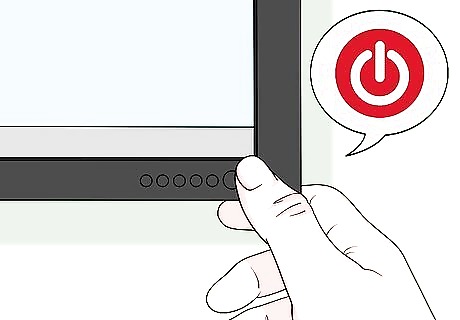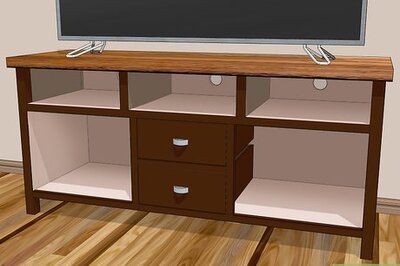
views
Wiping Down the Screen

Turn the screen off. LED screens do heat up some when they're on, so it's best to turn them off before cleaning. Let it sit for a while until it's cool. Doing so can make it easier to clean, as some of the static electricity will dissipate, which in turn will help release the dust.

Start with a dry microfiber cloth. Rub the screen down in gentle circles using just a microfiber cloth. The cloth will likely pick up most of the smudges on your screen, as it is able to pick up both dirt and oil. If it's not working, you may need to add distilled water to the cloth next. Microfiber cloth is soft and great for cleaning electronic items. You can even use a flannel shirt. Scrub gently. If your screen is extra smudged, you may be tempted to really put some elbow grease into it. However, LED screens can be fairly sensitive, so don't press down hard. If you press too hard, you could end up with a cracked screen. Using paper towels or sponges you have around the house can damage the screen, leaving scratches. A microfiber cloth is soft enough not to scratch the surface, but it is both able to hold water and capture oil, which are good qualities in a cleaning cloth. Plus, its fibers easily remove dirt. A soft, lint-free cloth will also work. Start with a clean cloth, as dirt in the cloth can scratch the surface. Make sure you don't use fabric softener on the cloths, though, as that can lead to a layer on the cloth that will inhibit cleaning.

Dampen the cloth. Add some water to the cloth. Wring out any excess liquid. You don't want so much water that the cloth is sopping. Rub down the screen in gentle circles with the cloth, focusing on areas that are particularly smudged. Never spray water or cleaner directly on the screen, as it can seep into areas it's not supposed to go.
Cleaning Problem Areas

Create a cleaner with dish soap. Most of the time, adding a bit of water to the cloth may be all you need. When it's extra smudged, try adding a tiny bit of dish-washing soap. Dilute it at a ratio of about 100 to 1. Even a single drop in a cup of water may be enough.

Add the cleaner to the cloth. Dip a new cloth in the cleaner, as you've already picked up a lot of dirt with the last cloth. You can also spray the cleaner onto the cloth instead of dipping. Wring out any excess, and rub down the screen in a circular motion. This method should remove any smudges that are left.

Apply cleaner with a cotton swab in difficult areas. If you can't get into the corners with your cloth, a cotton swab may solve the problem. Put a bit of cleaner on the swab, and rub it into the corners to get out the smudges.
Things to Avoid

Skip window cleaner. Your first instinct is likely to reach for a glass cleaner. It makes some sense. However, window cleaner is fairly strong, stronger than what you want for cleaning an LED screen. It can strip the sensitive surface, so it's best to avoid it.

Avoid cleaners with ammonia or alcohol. When browsing electronic cleaners, avoid any that don't specifically say they are alcohol- and ammonia-free. While some sites recommend using equal parts of isopropyl alcohol and water on LED screens, the truth is any alcohol or ammonia may strip the coating off your screen.

Don't void your warranty. If you use a cleaner that your manual specifically says not to use, that will likely void your warranty. Reading your manual ahead of time can save you a lot of grief in the future if you ever need to take your electronic device in for repairs.




















Comments
0 comment